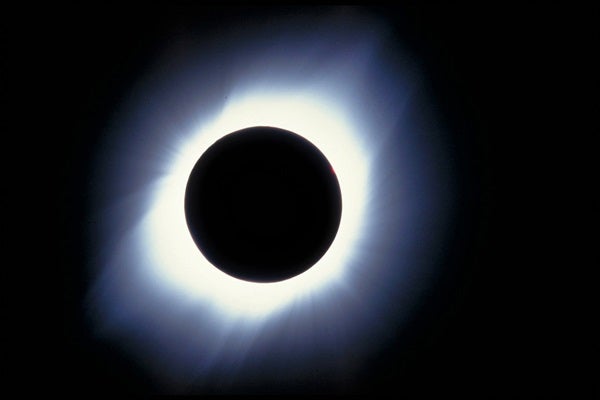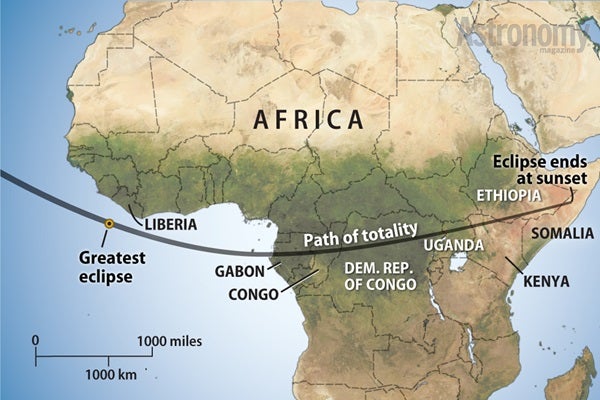Those in central Africa on November 3 will get a glimpse of a total solar eclipse, when the Moon lies between the Sun and Earth and blocks our star’s entire disk. Before totality occurs, the lineup’s path provides a partial eclipse to those in eastern North America.
Watch streaming video of the eclipse LIVE starting at 6:45 a.m. EST (11h45m UT) below thanks to SLOOH.com!
An eclipse occurs when the Sun, the Moon, and Earth align (in that order, with our satellite in the middle). If they do so while the Moon is closer than average to Earth, observers will witness a total eclipse. Sometimes, though, its location in its orbit makes the Moon farther away than normal at the time of an alignment. Its distance makes it appear smaller in the sky and prevents its shadow from covering the Sun’s whole disk. Thus, eclipse viewers will see a ring of sunlight, known as the “annulus,” in the sky during this “annular eclipse.”
The November 3 eclipse begins as an annular one. Just 15 seconds after the Moon’s shadow appears on the ground, though, Earth’s curvature moves that point of contact farther into the lunar shadow, creating a total eclipse as the path tracks eastward. The part of the eclipse that occurs near local noon — off the western African coast, in this case — lies close enough to the Moon that our satellite’s shadow completely covers the Sun and creates totality. Near the beginning of the path, though, the Moon is a little more distant and cannot block the whole Sun, leaving the annulus visible. This combination of annularity and totality is known as a “hybrid eclipse.” Just 5 percent of eclipses are hybrid, making this the rarest variety.
After the lunar shadow makes landfall, the length of totality decreases as the eclipse path wanders from Gabon to Somalia. Those near but not on the path of totality can still view a partial eclipse.
Astronomy contributor Joel K. Harris considers November’s event exciting but warns it may not be the easiest eclipse to catch, given the dubious weather conditions in central Africa. “The odds are about 50/50 that if you elect to expend the time and money to travel to the event, you will catch some glimpse of it,” he says. Nonetheless, he remains hopeful. “Even after chasing 18 total eclipses in the past four decades, I still find myself getting excited — and nervous.”
Eclipse viewing tips
- Don’t view this event without eye protection. Even during the annular phase, the Sun shines brightly enough to damage your retinas if you view it directly. Use only approved eclipse glasses, solar filters, or #14 welder’s glass.
- Arrive at your viewing site an hour or more before the partial phases of the eclipse begin, especially if you want to photograph the event.
- Once the Moon covers a large part of the Sun’s disk but before annularity or totality begins, take a look at your surroundings to see the effects of the eclipse, including the tiny solar crescents created by sunlight filtering through any nearby trees.











